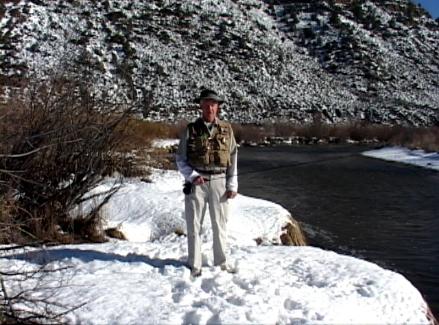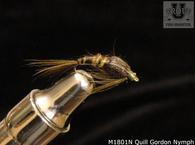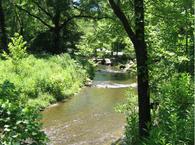
The Colorado River is a massive clear running tailwater river that starts about 25 miles north of Lake Granby in the Rocky Mountains National Park. Looking at the beautiful alpine meadows of the Colorado River headwaters in Rocky Mountains National Park, it is difficult to imagine that this river supplies the lush agriculture lands of Southern California and yet does not reach the Gulf of California before it is completely dry. When the Colorado River starts in the Kawuneechee Valley, it is a very small stream, but as it exits the state it has become a large river over 100 feet wide fed by many large tributary streams.
The Colorado is impounded by Shadow Mountain Lake about 15 miles from its origin. At this point, it is a good stream for beginners with mostly shallow riffles and some deep undercut banks. Browns, rainbow, and brook trout populate the river. The Colorado River is joined by the Fraser River near Grandby and there is a section From Windy Gap to the Troublesome Creek confluence designated as Gold Metal Water where special regulations apply.
After flowing through Hot Sulphur Springs, Byers Canyon and Kremmling and, the Colorado picks up water from its largest tributaries, the Blue River. Prior to reaching the Blue River, there are many places to access the Colorado for wading, especially around Hot Sulphur Springs. However, the blue River increase the size of the Colorado making float trips the only practical option in many areas, especially with the faster waters of Gore Canyon.
After the spring runoff normally around the second week of July, the Colorado River can be floated from the end of Gore Canyon to Dotsero. However, after Dotsero, the river goes into the Glenwood Canyon which is too difficult to fish except for a couple of places. The Roaring Fork River adds to its flow at Glenwood Springs causing the Colorado to become bigger and deeper, as it flows through a large valley.
The upper Colorado flows 15.5 miles past 1,000 foot cliffs from the outflow of Lake Powell at Glen Canyon Dam to Lees Ferry where it starts its turbulent flow through the Grand Canyon. The Colorado River at Lees Ferry at the base of Vermilion cliffs is often referred to as "the world's largest spring creek" because there are a series of parallel waterways each with the characteristic of spring creek-like waters. Rainbow trout are abundant in this area making this a fly fishing mecca.
Fly fishing the Colorado River:
The methods and the techniques to fish the Colorado River depend on where you are fishing the river. In the uppermost regions, light tackle, midge nymphs below strike indicators will work. However, you may select a heavier rig to use at Lees Ferry for fishing imitation crustaceans around the gravel bar. This is an example of the variety of fishing available on the Colorado River.
Spring:
Spring is an ideal time to fish the Colorado River starting with midges in March followed by blue winged olive patterns in April and May followed by the caddis patterns. Nymphs on a dropper is a good method to try.
Summer:
Summer starting in July after spring runoff is a productive time to fish the Colorado River. When the flow is below 14,000 cubic feet per second the fishing will be good, however power demands often require 20,000 cps so check the flow rates.The caddis fly hatches continue and the abundant stone fly hatches and the pale morning duns are underway. Remember, if fishing the fast water to use heavy tippets.
Fall and Winter:
The baitfish imitations, terrestrial, and midges will be good patterns to use in the fall and if you fish in the winter, the flows will be less
The Colorado River is accessible inside and just outside the Rocky Mountain National Park at several locations.
Lees Ferry has a few basic facilities including a scenic NPS campground close to the river. Road # 89 provides access to the area.





